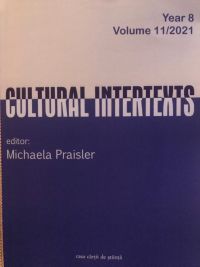Intertextuality and Spatiotemporal Agency in Butor’s La Modification
Intertextuality and Spatiotemporal Agency in Butor’s La Modification
Author(s): Erfan FatehiSubject(s): Language and Literature Studies, Literary Texts, Fiction, Studies of Literature, Novel, French Literature, Theory of Literature
Published by: Editura Casa Cărții de Știință
Keywords: intertextuality; semiotics;nouveau roman;
Summary/Abstract: Michel Butor’s body of work has always defied the classic literary classification, which is the main reason why he is often, against his own accord, associated with the Nouveau Roman movement. His magnum opus, La Modification (1957) is the epitome of the time-space collateral where the linear time is deconstructed and is led towards being spatial. This paper intends to analyse the spatial and temporal semiotic world that the author creates by mean of intertexts and workings of time and memory, and therefore provides a better understanding of the work. Intertextuality is the main meaning making mechanism that Butor relies upon and the takeaway from this study, thus, can be summarized in a six-pronged model with regard to the references made to art and architecture in Paris and Rome throughout the novel. Time in the narrative of the work starts with the looming clock in the train station and slowly transforms from linear to a multi-layered form. Butor tamers with the concept of time, which only develops within the central character’s mind, throughout the novel with the technique of time-montage. Considering which, the eidetic image of time in the novel is investigated in this study and the eleven strata of time which the narration of the work is constructed on is enumerated.
Journal: Cultural Intertexts
- Issue Year: 11/2021
- Issue No: 11
- Page Range: 38-49
- Page Count: 12
- Language: English

